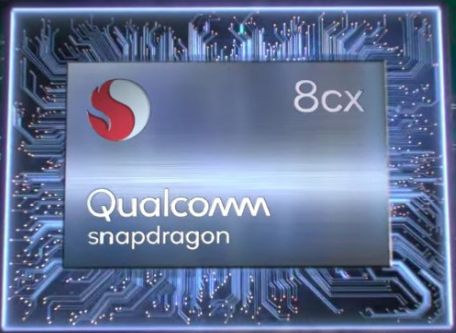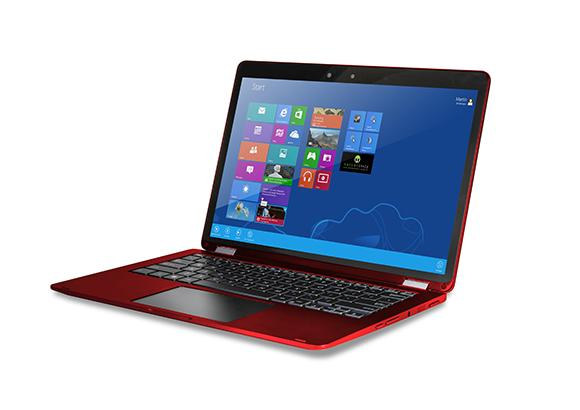The first day of Qualcomm Tech Summit focused on 5G technology, the second day revealed details about Snapdragon 855 mobile processor, and the third and last day was about Snapdragon 8cx Compute Platform, a 7nm processor specifically designed for always-on always-connected PCs that performs as well as some 15W processor(s) from Intel, but at much lower power consumption.
Snapdragon 8cx specifications:
- CPU – 8x Qualcomm Kryo 495 64-bit cores (dual cluster) with a total of 10MB cache; 7nm Process Technology
- Visual Subsystem – Qualcomm Adreno 680 GPU with DX12 support, 128-bit memory interface
- Memory – LPDDR4x, 8 Channels
- Storage – NVME SSD, UFS3.0
- Qualcomm Artificial Intelligence Engine
- Qualcomm Hexagon 685 DSP
- Qualcomm All-Ways Aware technology
- AI features
- 4th Generation Qualcomm AI Engine
- Enhanced voice assistant experiences for Alexa and Cortana with Qualcomm Aqstic technology
- Display
- Maximum On-Device Display Support: 4K
- Dual 4K external displays support
- Audio
- Qualcomm Aqstic audio technology
- Qualcomm TrueWireless technology
- Qualcomm Broadcast Audio technology
- Qualcomm aptX audio technology: aptX Classic, aptX HD
- Surround Sound Audio
- Speaker Protection
- Camera
- Image Signal Processor: Dual 14-bit ISPs, Qualcomm Spectra 390 image
signal processor - 4K HDR video capture @30fps (10-bit color depth, rec2020.)
- Single HFR 16 MPix camera at 60fps ZSL (Zero Shutter Lag)
- Dual 16 MPix cameras at 30fps ZSL
- Single 32 MPix camera at 30fps ZSL
- 4K HDR decode at 120fps
- Codec Support: H.265 (HEVC), VP9, and H.264
- Features
- Latest DirectX 12 API
- High efficiency video encoder
- Cinema core – VP9 & H.265 decoder
- 2nd Gen HDR Playback
- Dual 4K external display support
- Image Signal Processor: Dual 14-bit ISPs, Qualcomm Spectra 390 image
- Modem
- Qualcomm Snapdragon X24 LTE Modem Category 20
- Peak Download Speed – 2 Gbps
- Peak Upload Speed – 316 Mbps
- Downlink Features: 7×20 MHz carrier aggregation, Up to 256-QAM, Up to 4×4
- MIMO on five carriers, Full-Dimension MIMO (FD-MIMO), Maximum 20 spatial streams
- Uplink Features: Qualcomm Snapdragon Upload+, 3×20 MHz carrier aggregation, Up to 2x 106Mbps LTE streams, Up to 256-QAM, Uplink data compression
- Supported Cellular Technologies: LTE FDD, LTE TDD including CBRS support, LAA, LTE Broadcast, WCDMA (DB-DC-HSDPA, DC-HSUPA), TD-SCDMA, CDMA 1x, EV-DO, GSM/EDGE
- Features
- Connected Standby / Instant On
- Multi-Gigabit speeds for virtually seamless cloud connectivity/computing: up to 2Gbps LTE
- RF Front-End
- Qualcomm RF Front-End solution
- Qualcomm Signal Boost adaptive antenna tuning
- High-power transmit (HPUE)
- WiFi
- WiFi Standards: 802.11ad, 802.11ac Wave 2, 802.11a/b/g, 802.11n
- WiFi Bands: 2.4 GHz, 5 GHz, 60 GHz
- MIMO Configuration: 2×2 (2-stream)
- Features – MU-MIMO, Multi-gigabit Wi-Fi, dual-band simultaneous (DBS), integrated baseband
- Other Wireless Connectivity
- Bluetooth 5.0
- Near Field Communications (NFC)
- Location
- Global Emergency Services: Assisted GPS, OTDOA (LTE-based positioning)
- Satellite Systems: GPS, GLONASS, Beidou, Galileo, QZSS, SBAS
- Features
- Location Aware for app accuracy
- Low Power Geofencing and Tracking
- Sensor-assisted Navigation
- Pedestrian Navigation
- USB – USB 3.1
- Security
- Windows 10 Support: Enterprise, Pro, Home
- Improved crypto-security
- Remote management and location awareness for enterprise efficiency
- Charging – Qualcomm Quick Charge 4+ technology
The processor has been designed from the ground up as for laptops, and it’s allegedly not a modified version of Snapdragon 855. Qualcomm did not include 5G support in the specifications, going instead with multi gigabit 4G LTE connectivity, however 5G would be supported if combined with Snapdragon X50 modem
The company claims Adreno 680 GPU has been engineered to provide a 2x performance improvement and 60% greater power efficiency over the previous generation (Snapdragon 850). Note the company only mentioned DirectX 12 API, and none of the other graphics API, meaning the processor is designed for Windows only. That means we should not expect Linux or Android to be ported to the processor, unless maybe it’s closer to Snapdragon 855 than announced, and the community decides to work on it.
So when can we expect Snapdragon 8cx always-on always connected mobile PCs? You’ll still need to be patient, as while the Snapdragon 8cx is currently sampling to customers, commercial devices are expected to start shipping in Q3 2019. More details may be found on the product page.

Jean-Luc started CNX Software in 2010 as a part-time endeavor, before quitting his job as a software engineering manager, and starting to write daily news, and reviews full time later in 2011.
Support CNX Software! Donate via cryptocurrencies, become a Patron on Patreon, or purchase goods on Amazon or Aliexpress







> CPU – 8x Qualcomm Kryo 495 64-bit cores (dual cluster)
Do we have sources for that? I’ve tried to track down the dual-cluster tidbit, unsuccessfully. DynamIQ allows 8 cores in a single cluster, IIRC.
kernel source codes should be open
Aye. But we’ll have to wait for that for a while, I guess.
> Remote management and location awareness for enterprise efficiency
In other words: the device is owned by those persons controlling the telco provider?
any device running a cellular modem is vulnerable regardless this only makes it easier
More to the point what are you doing that require you are always connected online?
For the provider, they can always monitor your habits, location, shopping, interests, social media site use, the device, keyboard, camera and mic. Yet the devices are not dumb terminals, so again what use does your working life need always connected for?
On my notebooks I constantly:
1. work with online code repos
2. use google drive, google docs and IM clients
Oh, and I’ve also dialed in a dozen of hours on AWS since last weekend ;p
While these may not mandate literally *always* online (particularly if we subtract the IM clients), they do require frequent random internet access, which could be loosely equated to ‘always online’.
Suppose we should define always on. Like a mobile phone is always connected to the network?
Since it is location aware for app accuracy ( read spies on where you go )
Google, uber etc type spying. ( how to monetize the user springs to mind )
My own definition of ‘always on’ is always on an internet-connected network, e.g the cell network, when not suspended/sleeping. Other than that, I don’t have any use for a notebook to sit on a network while its lid is closed and I’m not using it — I don’t expect to receive calls on the device. The ‘always on’ advantage for me is not needing a wifi network to connect to the internet.
BTW, I forgot to mention that I’m in Europe and I pay the equivalent of $6.85 for an 8GB monthly data plan (which is a tad expensive for the local norms, but I get some perks with that plan).
I would love to see an affordable Xiaomi laptop or Chromebook with this.
Alas, it seems like RockChip and MediaTek are much quicker to respond in that space — the long-rumored sd845-based chromebook is yet to be seen.